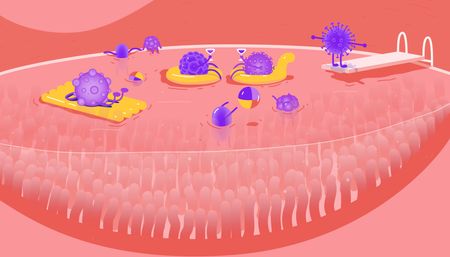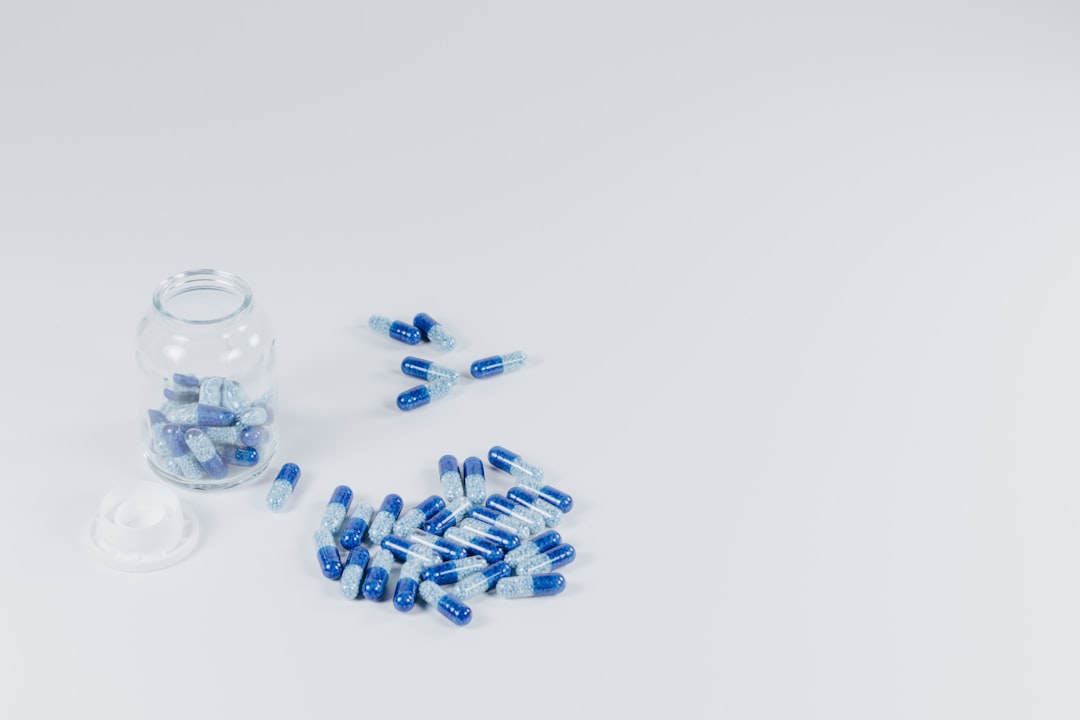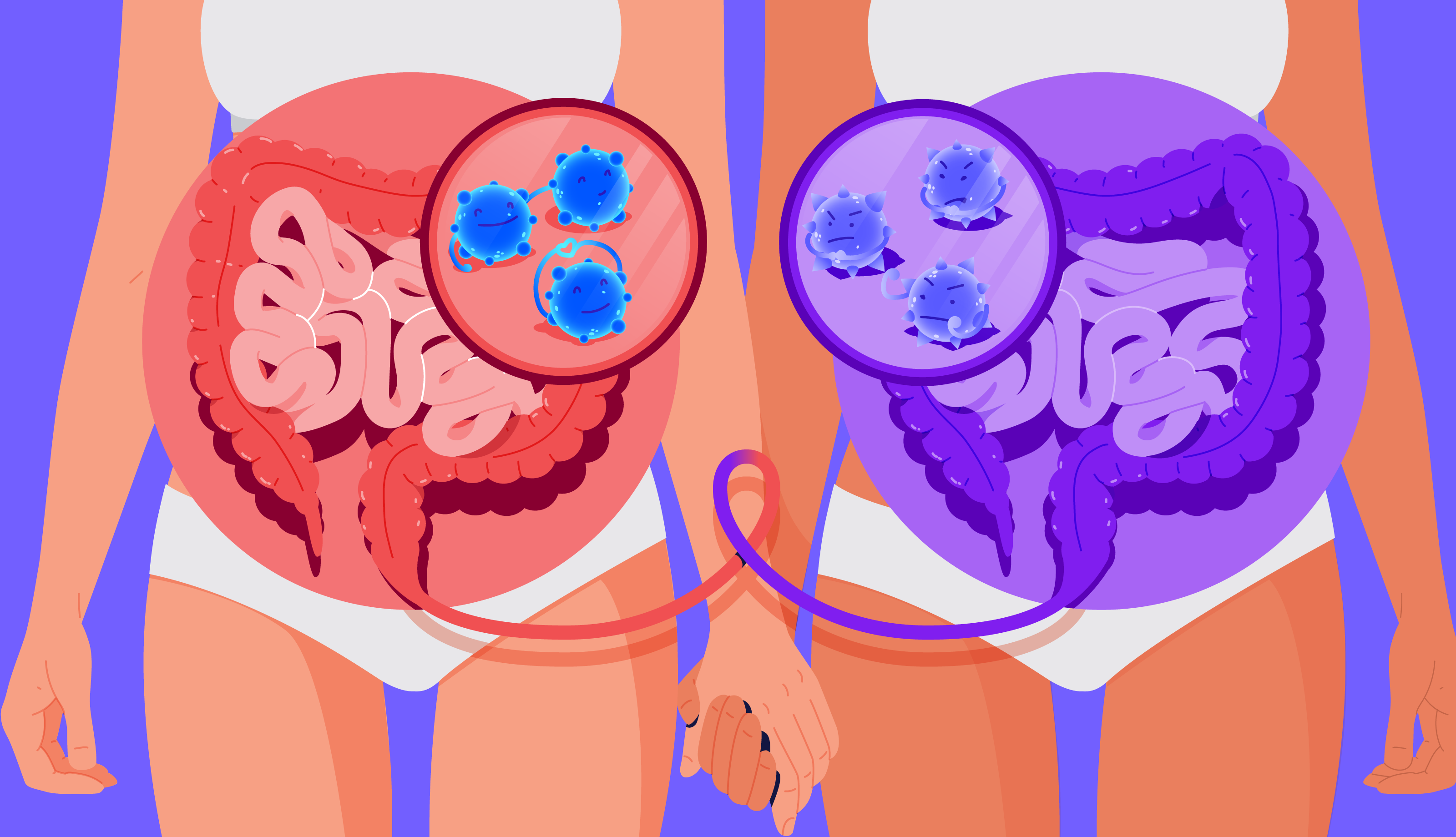Bacteria in the gut microbiome can chemically modify prescription medicine and influence how well they work, and adverse reactions too.
It’s no secret in the medical community that prescription drugs don’t always work, especially when it comes to chronic diseases. In some cases, it can take several attempts with different drugs before finding the one that works for each patient with acceptable side effects, but preferably without any at all.
So it’s no surprise that we’re turning to this topic in our newest edition of Science Bites on our mission to bring cutting-edge science to the masses in digestible morsels of comprehensible English.
Knowledge is the key to a long and healthy life. That’s why we’ve engaged the services of Anna Popenko, second-in-command of our microbiome research team, to see what we can learn from fresh research into what those trillions of bacterial cells are doing in our gut.
This week’s edition delves into the apothecary of your gut microbiome, looking at an astounding study that sought to measure how bacteria can influence the effects of prescription drugs. And we’re going to start with some impressive figures from this article:
- 271 drugs were tested
- 76 bacteria from the human gut were tested
- 20,596 bacteria-drug interactions were analysed
- 65% of drugs studied: levels were significantly reduced by at least one bacterial strain
- 11-95: number of drugs metabolised by each bacterial strain
Microbes metabolise stuff 101
Bacteria evolve tools to break down substances they encounter into sources of energy, and it’s not just food.
There are ecosystems of bacteria all over and inside your body, and they have undertaken the important job of providing services to us, the hosts, in exchange for a warm, moist place to live.
These services include preventing pathogenic bacteria from making us sick, maintaining the correct level of acidity for each environment, and training our immune system so it works properly.
The most exciting microbiome is in the large intestine, which plays host to trillions of bacterial cells that all toil away at breaking down our leftovers, be it food or medicines, and using them to fuel their existence. We call these chemical processes metabolism or fermentation.
Unlike us, they have the ability to poop chemical rainbows, like vitamins and short-chain fatty acids (including butyrate), that nourish us from the inside-out. But they also poop other things which may have a neutral or negative effect on us. For example, some bacteria poop proteins that are deadly toxins #botulism #anthrax.
Indeed, this is just an extreme example to help us illustrate that bacteria can do a lot of things. They are also significantly smaller, and genetically simpler, than our great hulking human frames, which allows them to reproduce very quickly, and thus, evolve new tools and weapons faster.
Their unique ability to adapt their arsenal of tools to their environment for survival also means that bacteria can learn to metabolise a wide variety of substances. And as we’ll see in this study, some are far more proficient than others at metabolising prescription drugs.
Prescription drugs: it’s not as simple as 1-2-3
When you swallow a pill, it’s not an arrow hitting a bulls-eye, it’s a harassed commuter at peak time during a tube strike.
To be precise, we are NOT what we ingest, no matter what the news says. Everything you put in your body undergoes many transformations until it is broken down into tiny parts that are either used or discarded.
It starts with your saliva and gastric juices: they’re designed to help mulch your food into a pulp for extraction further down in the small intestine, and the leftovers are sent to your gut bacteria. But that’s not all.
Your genes and microbiome influence how well a prescription drug works
Your genes also help determine what your body takes up and at what rate. That’s why some people are more sensitive to caffeine than others, but also why medications may not work (or work too much).
Doctors and scientists also had an inkling that gut microbes were doing something to drugs in their patients. There were a few case studies here and there - until this study came along.
Published in Nature, a particularly reputable journal in the scientific community, this investigation by four researchers analyses how 76 common gut bacteria metabolise 271 different prescription drugs.
Led by Micheal Zimmerman, his team didn’t stop there, they even established causal links between bacterial genes and drug metabolism, meaning that soon, gut microbiome analysis could even be used to identify specific drugs that work for each patient.
How does it work
When bacteria metabolise the drugs you’ve ingested, they may influence whether or not they work and even how they work .
The most common way to take medication is by swallowing a pill, where it is either absorbed into the bloodstream by the upper digestive tract, or it transits to the intestines, where it is metabolised by microbes there.
No matter where it is metabolised, the drug undergoes chemical modifications that break the drug down, producing metabolites. These metabolites can be distinctly different to the drug in its initial form (called “parent drug”).
Bacteria and drug metabolism
Bacteria can affect drug metabolism in different ways: activation (making them effective), inactivation (rendered useless), or toxification (rendered toxic). And this study shows just how much bacteria can influence common prescriptions drugs.
According to the results of this study, 65% of the 271 drugs tested were significantly influenced by at least one bacterial strain. Simply put, one or several strains of bacteria were able to reduce the level of the drug available by 20% or more.
In addition to that, of the 76 bacterial strains tested, each one was able to metabolise 11–95 different medications. The study identified a total of 871 metabolites, meaning that bacteria are able to produce more than one metabolite for each drug molecule they encounter.
But the researchers didn’t select bacteria they tested based on unique abilities to metabolise drugs, rather they chose microbes that are commonly found in the human microbiome.
If you’ve taken the Atlas Microbiome Test, you’ll likely recognise the names of them. The majority are microbes you’ll have seen mentioned in your report, like Bacteroides, Eubacterium, Clostridium, Roseburia, Dorea, Coprococcus, Blautia, Bifidobacterium, and Ruminococcus.
Bacteroides proved themselves exceptionally capable of this task: 14 different strains of these bacteria ranked in the top 20 of microbes able to metabolise the greatest number of drugs (45-95 drugs out of 76). In fact, Bacteroides made up four of the top five in this ranking too.
Interestingly, Clostridium difficile, an antibiotic-resistant pathogen, was also an important drug metaboliser. C. diff is a particularly aggressive strain of infectious bacterium and constitutes a significant risk to patients in hospitals. Interestingly, faecal microbiota transplants (that’s right, poop transplants) are a particularly effective method for treating C. diff.
Overall, 29 different strains of bacteria were able to metabolise 30 or more drugs each. Let’s face it, that’s quite an impressive result. If you’re wondering how this is possible, that’s a fair question.
Genetic bacterial traits make it possible
According to this research, determining genetic traits of bacteria makes it possible to identify the mechanisms by which they metabolise drugs, thus refining our understanding of why treatments may work for some people and not for others.
As Zimmerman and colleagues helpfully remind us: together, bacteria of the small and large intestine encode 150-times more genes than all the genes present in your genome. Framed like this, it’s not particularly surprising that they would also have the genetic attributes that allow them to metabolise drug compounds either.
If genes were macarons, you'd have more microbial macarons than human ones
In addition to this, the team even went as far as investigating the link between genetic traits of these bacteria and drug-metabolising capabilities. Here too, they found answers. Bacteria have genes that encode proteins called “enzymes” that they use to transform compounds for use.
They studied the gene products of microbes (proteins they make) and found it possible to identify specific products involved in drug metabolism. By doing so, they could see which bacteria metabolise drugs based on their genetic features (gene markers).
What they found is that several strains of bacteria may share specific genetic features allowing them to metabolise drug products. And thus, the important aspect of this study is that microbial drug metabolism appears to be determined by genetic attributes, and not what strain or species the bacteria belong to.
Top 30 drugs with the most metabolising strains of bacteria
This study selected a wide range of more or less common drugs that are used to treat a variety of conditions both at home and in hospital. Some of them are analgesics (pain-relievers) and anti-inflammatory medications.
Others are dedicated to managing the effects of chronic and deadly diseases like cardiovascular disease, diabetes, cancers, and autoimmune conditions. Common medications for chronic heartburn also feature, as well as those used to treat hormonal imbalances, and even prevent organ rejection.
We’ve made a list of the top 30 drugs that are metabolised by the most strains of bacteria and organised it by the main focus of treatment and reasons they are prescribed. Check it out, we’re sure you’ll recognise a few of them.
| Health | Treatment* | Drug |
| Pain | Unspecified | Diacetamate |
| Urinary tract | Phenazopyridine | |
| Anti-inflammatory | Sulfasalazine, Deflazacort | |
| Non-steroidal anti-inflammatory | Pranoprofen | |
| Mental health | Antidepressant | Fluoxetine, Vilazodone |
| Antipsychotic | Risperidone | |
| Heart | Hypertension | Nitrendipine, Olmesartan medoxomil, Quinapril |
| Blood thinner | Clopidogrel | |
| Digestion | Chronic acid reflux | Pantoprazole, Omeprazole, Tenatoprazole |
| GERD, gastric ulcers | Roxatidine | |
| Constipation | Bisacodyl | |
| Diarrhoea | Racecadotril | |
| Allergies | Antihistamine | Cetirizine |
| Diabetes | Antidiabetic | Tolazamide |
| Cancer | Chemotherapy | Melphalan |
| Cancer therapy | Digitoxin | |
| Endocrine | Hormonal imbalances | Bromocriptine mesylate, Danazol |
| Birth control | Norethindrone | |
| Infections | Antimalarial | Artemisinin |
| Antiparasitic, antibiotic | Tinidazole | |
| Antiviral | Famciclovir | |
| Degenerative diseases | Parkinson’s | Entacapone |
| Transplants | Prevents organ rejection | Mycophenolate mofetil |
These drugs are commonly prescribed for this usage, but may be used for other non-related health issues too.
Medicine of the future
Personalised medicine is the science of identifying what treatments work for individuals based on their complex molecular profiles.
Scientists and doctors around the world believe that the future of medicine is based on in-depth screening of individuals to identify what makes them unique, and using this information to find the best treatment for them.
Currently, standard treatment models are based on the results of studies with many participants. If a drug or treatment method is effective for a majority of individuals, then it is prescribed to patients.
This study summarises hundreds of drug-microbiome interactions that may affect the levels and metabolites of drugs in a person’s system. That part remains to be studied.
It also provides fundamental guidance for future areas of research. They found that bacterial gene products are a reliable indicator of drug metabolism pathways, more so than which strain of bacteria is actually metabolising the drug.
By applying the knowledge of gene products to databases of bacterial genomes, this research suggests that it is possible to identify a bacterium’s ability to metabolise drugs, starting from findings in current research.
The team of researchers led by Michael Zimmerman have created the initial framework for deeper investigations into how the gut microbiome can influence specific drug metabolisms.
Combined with our growing understanding of how human genes influence drug metabolism, studies like these are making the future of personalised medicine a very tangible prospect.





















